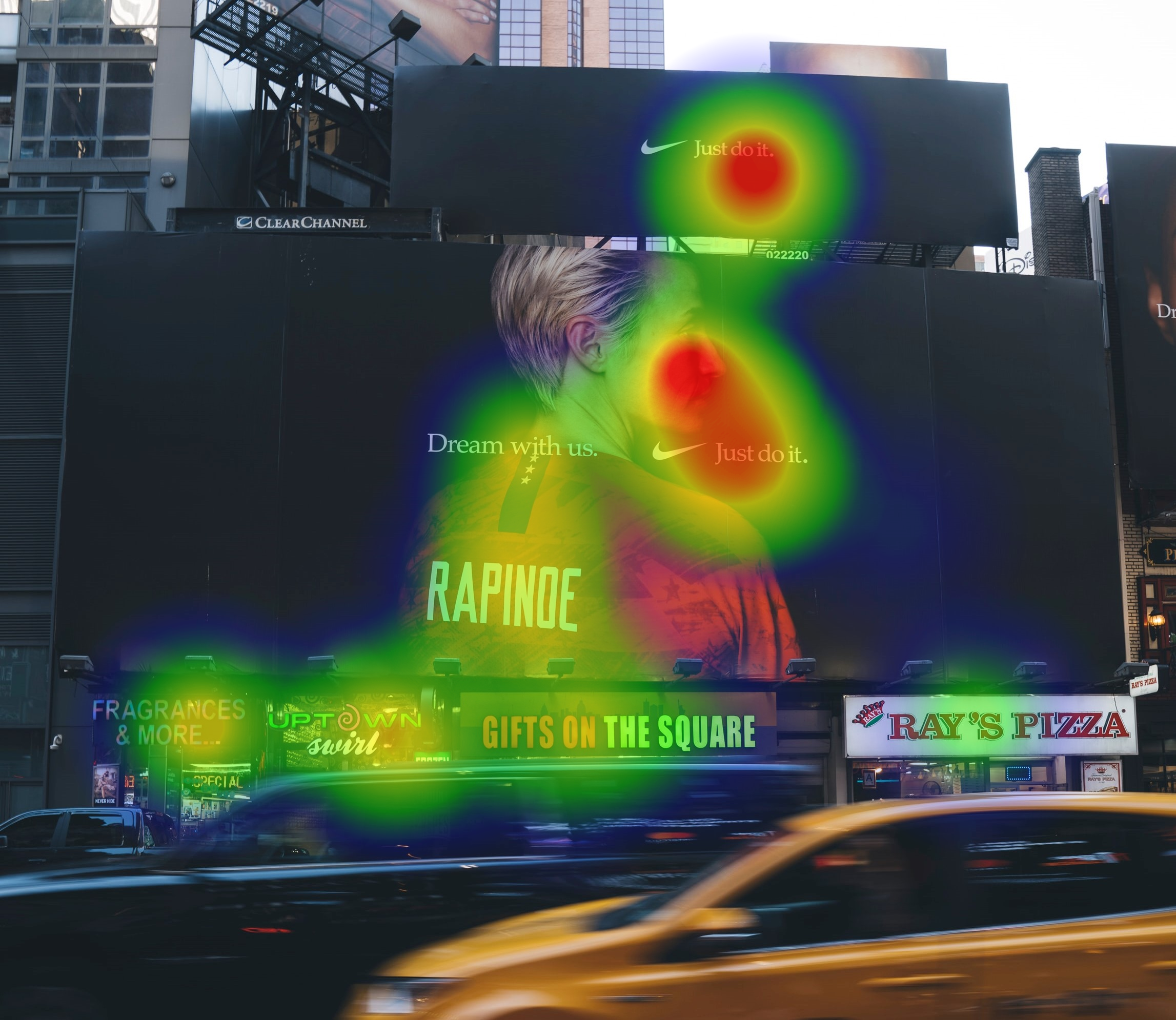Billboards are an age-old advertisement method. The first-ever billboard was invented in the 1830s and promoted a circus show. Soon after, business owners were able to purchase outdoor spaces, and new regulations and laws allowed them to set up their own posters.
Since then, outdoor advertisement posters have only increased in popularity and play a huge part in out-of-home media today. It is almost impossible to imagine a city center without any type of billboards which makes it even harder to stand out as a business owner. Passersby are so used to seeing advertisement posters, that the vast majority of billboards are only registered subconsciously. Fortunately, technology has advanced since the 1830s, allowing us to uncover how billboards are perceived.
The best method to see what viewers are seeing is through eye-tracking. Eye-tracking makes the subconscious gaze visible and can reproduce gaze data even if the poster was just viewed for a split second. In fact, only 10 participants are needed to deliver significant results.
Creating an effective billboard poster is a challenging task with a lot of guesswork: “Should I place the logo on the bottom or on top?”, “Which direction should the people on the poster face?”. Let eye-tracking answer your questions for you through evidence-based gaze data and increase your conversion rate with optimized marketing campaigns. EYEVIDO Lab delivers diverse visualizations and is used by many companies to optimize the effectiveness of their advertisements. Download our poster example with an included use case of Germany’s second-largest advertising provider to learn more about billboard eye tracking with EYEVIDO Lab.

